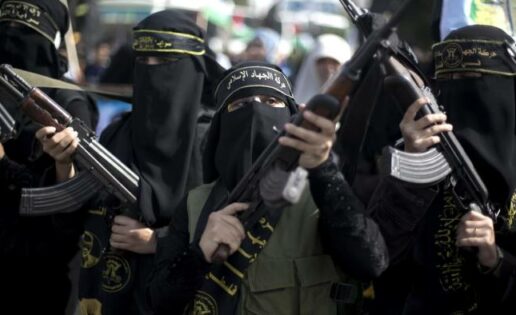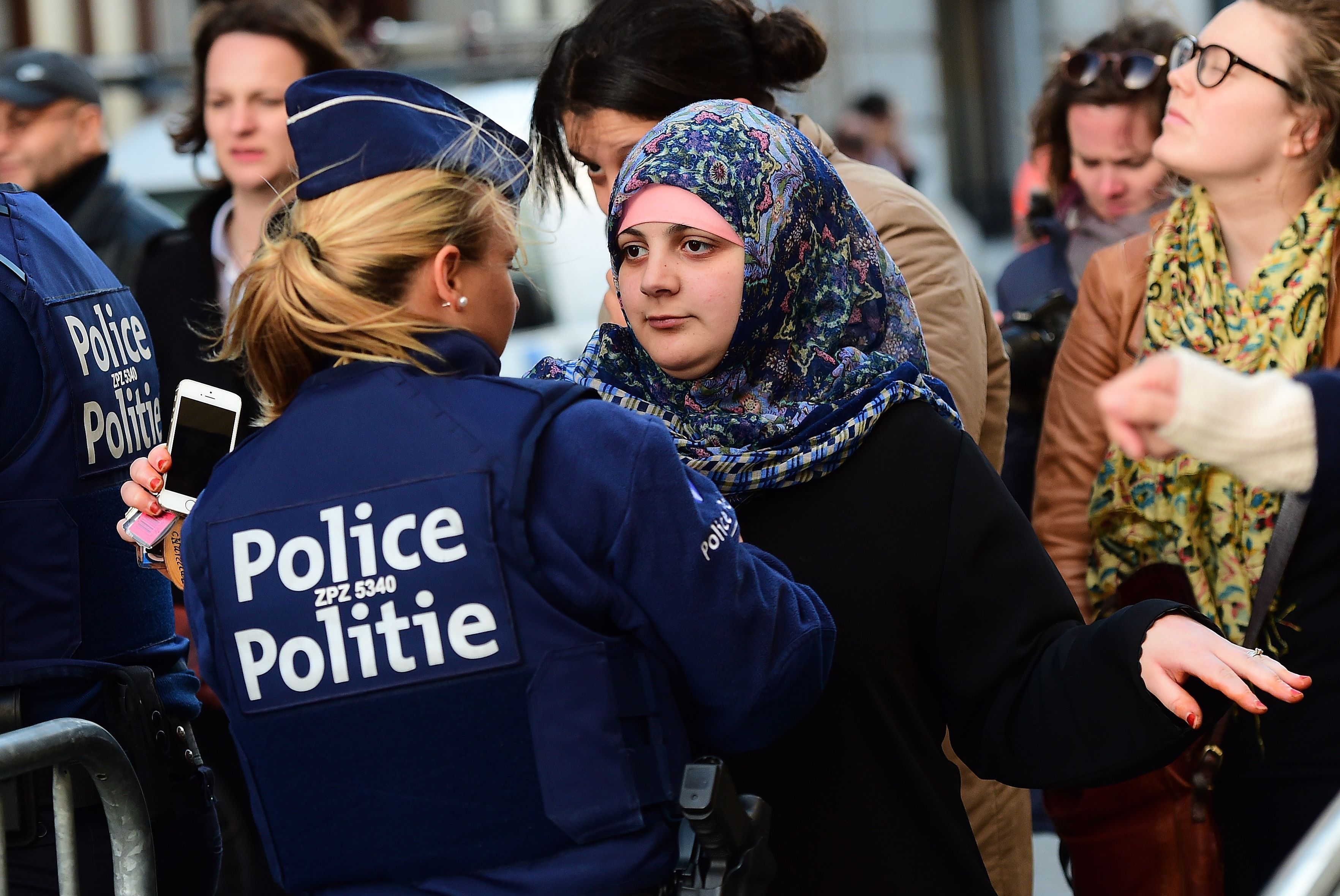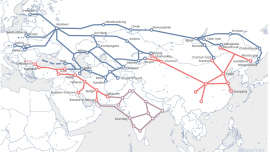
The first investigations into jihadism were based on the principle of socioeconomic determinism.
Radicalisation, it was argued, was the result of social, economic, and geographical variables such as place of education – country, city, or neighbourhood – more than any other factor.
However, in recent times it has been suggested that ”at the origins of the jihadist radicalisation process there is a radicalisation of thoughts and … emotions that cannot be explained only by the factors of the socioeconomic environment in which these people live”.
Thus, although there are political or economic reasons that may be capable of being manipulated to give meaning to an extreme radical credo, ”the sustainability of the entire process of interest, attraction, recruitment and mobilisation of potential terrorists is necessarily loaded with an ideology”.
In fact, everything that surrounds this personal journey of radicalisation is pure ideology, which, as is the case with Salafism, is basically Manichean, i.e., simple, easily understandable and without nuances.
Furthermore, ”in this transmutation of people, violence is one more vital option, like any other, before which people make calculated decisions based on cost-benefit calculations and in which friends, family, context or social networks – that is to say, the emotional factors – play a decisive role in the final choice to take”.
At the end of the road to radicalisation the step towards violent action is not always taken. For this reason, when delineating the activities of jihadist recruitment networks, one must be able to distinguish sympathisers from real terrorists.
Ultimately, ”rational choices, moral objections, and the environment of friendships and people are the critical factors that can help avoid recruitment and the invitation to move to terrorist action“.
”When there is a personal project, terrorism is a distraction, which has an unaffordable cost for people“.
When basic socialisation networks – i.e., family and friends – are solid, robust, and free from radical ideas, recruitment is more difficult and moral objections to violence are more likely to be supported. In those settings, violence is not the choice of the smartest; rather, ”jihad Islam, violence and terrorism in those circumstances are for fools“.
Beyond these close and personal circles, given jihadists’ apparent success in the use of social networks and the Internet for the recruitment of people without personal contact with targeted individuals, too much emphasis has been put on the need to build counter-narratives against the terrorist narrative.
It remains to be seen whether this can be decisive in the fight to avoid radicalisation when real personal environments and not virtual ones are the battleground for the minds and souls of potential recruits.
Also, states’ use of force to counter terrorism demands a specifically targeted and advanced approach: ”advanced information and surgical intervention are imperative for the behaviour of states in the face of these challenges”.
”The most complex vectors – and, indeed, all of them are complicated – when addressing the problem of jihadist radicalisation are the specific identity of each person and the variety of people susceptible to radicalisation“.
It is not easy to put policies in place to avoid jihadist radicalisation when contemporary societies have difficulties in managing the cultural, national or linguistic identities of their citizens, which are increasingly multiple and cross various identity lines.
The first documents produced by the European Union on the economic and social conditions most conducive to the radicalisation of Muslim people and their becoming jihadist militants date from 2005.
Since then, Molenbeek in Brussels has become part of the world collective imagination as a haven for radical jihadists after becoming the temporary hiding place of some of the terrorists who carried out the attacks in Paris and Belgium in 2015.

It has also become a model environment within large cities, which has been and is still being used as an example of the way in which the radicalisation and recruitment of jihadists occur in similar neighbourhoods of other Western European metropolises.
The role of the Internet was decisive in expanding the feeling among young recruits of belonging virtually to a larger community than their usual social environment. In this process, young women play a prominent role.
The active involvement of women in the radicalisation and training of fresh recruits differs from that of women in the 20th century within radical terrorist movements at that time.
For example, ”in Argentina, women in Montonero terrorist couples used to resent men for leaving them at home to look after their children on their own, when men went to Cuba for two-week periods of ‘training’ reserved only for men”.
Currently, the prominence of women fanatics that are recruited by jihadist terrorist groups is such that ”the German security forces instruct their rank and file that, in the event of encountering people who are about to carry out an attack, they should shoot the women first”.

The rationale for this is that, as a rule, female jihadist terrorists have proved not to display any remorse when carrying out their violent actions, while male terrorists tend to hesitate over the fulfilment of their missions more often than women when they encounter security forces.
Furthermore, contrary to popular belief, the numbers of self-radicalised people – the so-called ”lone wolves” – are insignificant among the jihadist population, while ”converts are already 10% of those detained in Spain”.
In the end, however, in Europe the so-called radicalisation agents – former foreign fighters, imams, neighbours or friends – are decisive in the radicalisation process, since the recruitment and radicalisation of people take place mostly face to face and in the family environment.
It needs to be acknowledged that the origins of jihadist terrorism are ideological, sectarian, fanatical and extremist, and have religious roots.
This extremism is not seen yet another manifestation of the universally recognised right to exercise freedom of expression. In the world of obedience to Islam, moreover, or a particular interpretation of it, ”the words used by the propagators of extremism are not only another expression of such freedom of expression but are also a call to action with implications beyond worldly life, and with heaven or paradise as the aim”.
In both Muslim countries and Islamic communities established in the West, a vacuum has been created and is being used by jihadists to propagate their extremist ideology through the most important soft areas of societies – education, the means of socialisation through the Internet and the media, or religious preaching in places of worship.

For this reason, there are important voices within key governments in the Islamic world that stress the need ”to recover Islam from the hands of al-Qaeda or IS, which are trying to abduct it exclusively for themselves”, given the fact that Muslims are often among the victims of these organisations – which claim for themselves the right to decide who is a Muslim and who is not.
From an operational point of view, there is a belief in many Arab countries – hence the presence of military contingents from Arab states in Yemen, Libya and Afghanistan – and in countries that are not predominantly of Arab population, such as Russia, that ”Islamic terrorism must be fought wherever it operates, in any corner of the world, because, if not, there is a risk that jihad terrorism will reach the doorsteps of all of us, in a more massive way than we have experienced so far, to attack us in our own daily environments”.
Therefore, counterterrorism experts around the world are concerned about the exit routes that IS fighters in Iraq and Syria found to Libya, the central Caucasus, the Philippines, or Somalia after the demise of the Levant caliphate.
IS fighters even went to New Zealand: ”something must be happening in that country for some of the leaders of the Muslim Brotherhood to be moving there from the US and Europe”.

Equally worrying, al-Qaeda has not disappeared.
Generally, terrorist jihad continues with its organisational and narrative metamorphosis, in terms of which the organisations led by the late Osama bin Laden, IS and the Muslim Brotherhood are part of the same phenomenon.
All of them are well connected by social networks (as an element of the recruitment and mobilisation of new members), by drug trafficking (as one of their favourite sources of financing), and by terrorism (as an operational and marketing method, as the traditional 19th century anarchists’ belief in propaganda by the deed demonstrated).
The use of the tactic of hiding its members within the Muslim communities of the places where they are operating in targeted cities or countries; the use of women – especially Western women, as al-Qaeda did in the 1990s – to transfer money, weapons, intelligence and activists to conflict zones, as has been the case in recent years in Iraq or Syria; and the recruitment of new followers in refugee camps or the training of children of such young ages as five or six are all part of the modus operandi of jihadist terrorism.
Terrorism of this kind is one of the world’s biggest security challenges.
This challenge is monumental, and engaging Muslim countries in the fight against jihadism is critical to the success of this effort.
And the level of the threat it represents is increasing as it rapidly finds areas for cooperation and joint venture with other large transnational organised crime groups like drug traffickers.
_____________________________________________________________________________________
NB 1 – Quotes in italics and bold are attributable to senior officials from national governments and regional and international organisations whom the author had the privilege to meet with. Their names and affiliations cannot be shared. This blog represents the author’s views only.
NB 2 – A similar version of this blog was previously published by the Geneva Centre for Security Policy (GCSP) on October 12th, 2021: https://www.gcsp.ch/global-insights/bad-actors-iii-jihadists-part-2
EspañaMundoOtros temasUnión EuropeaYihadismo
Tags
- "Lone wolves"
- 1990s
- 19th century
- 19th century anarchists
- 2005
- 2015
- 20th century
- Action
- Activists
- Activities
- Activities of jihadist recruitment networks
- Advanced approach
- Advanced information
- Afghanistan
- Al-Qaeda
- Anarchists
- Arab
- Arab countries
- Arab states
- Argentina
- Attacks
- Attraction of potential terrorists
- Bad Actors
- Basic socialisation networks
- Battleground
- Behaviour
- Behaviour of states
- Belgium
- bin Laden
- Brussels
- Calculated decisions
- Call to action
- Caucasus
- Central Caucasus
- Challenges
- Children
- Cities
- Citizens
- City
- Community
- Conflict zones
- Contemporary societies
- Context
- Converts
- Cooperation
- Cost-benefit calculations
- Counter terrorism
- Counter-narratives
- Counterterrorism experts
- Country
- Credo
- Crime
- Crime groups
- Critical factors
- Cuba
- Cultural identities
- Decisions
- Determinism
- Distraction
- Drug
- Drug trafficking
- Economic and social conditions
- Economic conditions
- Economic reasons
- Economic variables
- Education
- Emotional factors
- Emotions
- Environment of friendships
- Environment of friendships and people
- Environment of people
- Europe
- European Union
- Exit routes
- Extreme radical credo
- Extremism
- Factor
- Family
- Family environment
- Female jihadist terrorists
- Financing
- Force
- Foreign fighters
- Former foreign fighters
- Freedom
- Freedom of expression
- Fresh recruits
- Friends
- Geographical variables
- German security forces
- Governments
- Governments in the Islamic world
- Heaven
- Hiding place
- Ideas
- Identity
- Identity lines
- Identity of each person
- Ideology
- Imans
- Information
- Intelligence
- Interest of potential terrorists
- Internet
- Intervention
- Investigations
- Iraq
- IS
- IS fighters
- Islamic communities
- Islamic communities established in the West
- Islamic world
- Jihad islam
- Jihadism
- Jihadist militants
- Jihadist radicalisation
- Jihadist recruitment networks
- Joint venture
- Key governments in the Islamic world
- Large cities
- Large transnational organised crime groups
- Levant
- Levant caliphate
- Libya
- Life
- Linguistic identities
- Marketing
- Marketing method
- Media
- Men
- Metropolises
- Militants
- Military contingents
- Minds
- Minds and souls
- Missions
- Mobilisation of potential terrorists
- Molenbeek
- Money
- Montonero terrorist couples
- Moral objections
- Moral objections to violence
- Muslim
- Muslim Brotherhood
- Muslim communities
- Muslim countries
- Muslim people
- Narrative metamorphosis
- National identities
- Neighbourhood
- Neighbours
- New Zealand
- Obedience to islam
- Objections to violence
- Operational method
- Organisational metamorphosis
- Organised crime groups
- Origins of jihadist radicalisation
- Origins of jihadist terrorism
- Origins of the jihadist radicalisation process
- Osama bin Laden
- Paradise
- Paris
- People
- Person
- Personal contact
- Personal journey
- Personal journey of radicalisation
- Personal project
- Philippines
- Place of education
- Places of worship
- Policies
- Political reasons
- Popular belief
- Potential terrorists
- Principle of socioeconomic determinism
- Propaganda
- Propaganda by the deed
- Propagators
- Propagators of extremism
- Pure ideology
- Radical credo
- Radical ideas
- Radical terrorist movements
- Radicalisation
- Radicalisation agents
- Radicalisation of emotions
- Radicalisation of fresh recruits
- Radicalisation of thoughts
- Radicalisation process
- Rank and file
- Rational choices
- Real terrorists
- Recent times
- Recruitment of people
- Recruitment of potential terrorists
- Refugee camps
- Religious preaching
- Religious roots
- Right to exercise freedom of expression
- Road to radicalisation
- Russia
- Salafism
- Security
- Security challenges
- Security forces
- Self-radicalised people
- Social conditions
- Social networks
- Social variables
- Socialisation networks
- Socialisation through Internet
- Societies
- Socioeconomic determinism
- Socioeconomic environment
- Soft areas of societies
- Somalia
- Souls
- States
- Surgical intervention
- Sympathisers
- Syria
- Targeted and advanced approach
- Targeted approach
- Targeted cities
- Targeted countries
- Targeted individuals
- Temporary hiding place
- Terrorist action
- Terrorist couples
- Terrorist jihad
- Terrorist narrative
- Terrorists
- Thoughts
- Threat
- Training of children
- Training of fresh recruits
- Transfer activists
- Transfer Intelligence
- Transfer money
- Transfer weapons
- Transmutation of people
- Transnational organised crime groups
- Trasnational organised crime
- Unaffordable cost
- Unaffordable cost for people
- US
- Use of force
- Use of women
- Variety of people
- Victims
- Violence
- Violent action
- Vital option
- Weapons
- Western European metropolises
- Western women
- Women
- Women fanatics
- Wordly life
- Words
- Yemen
- Young recruits
- Young women








